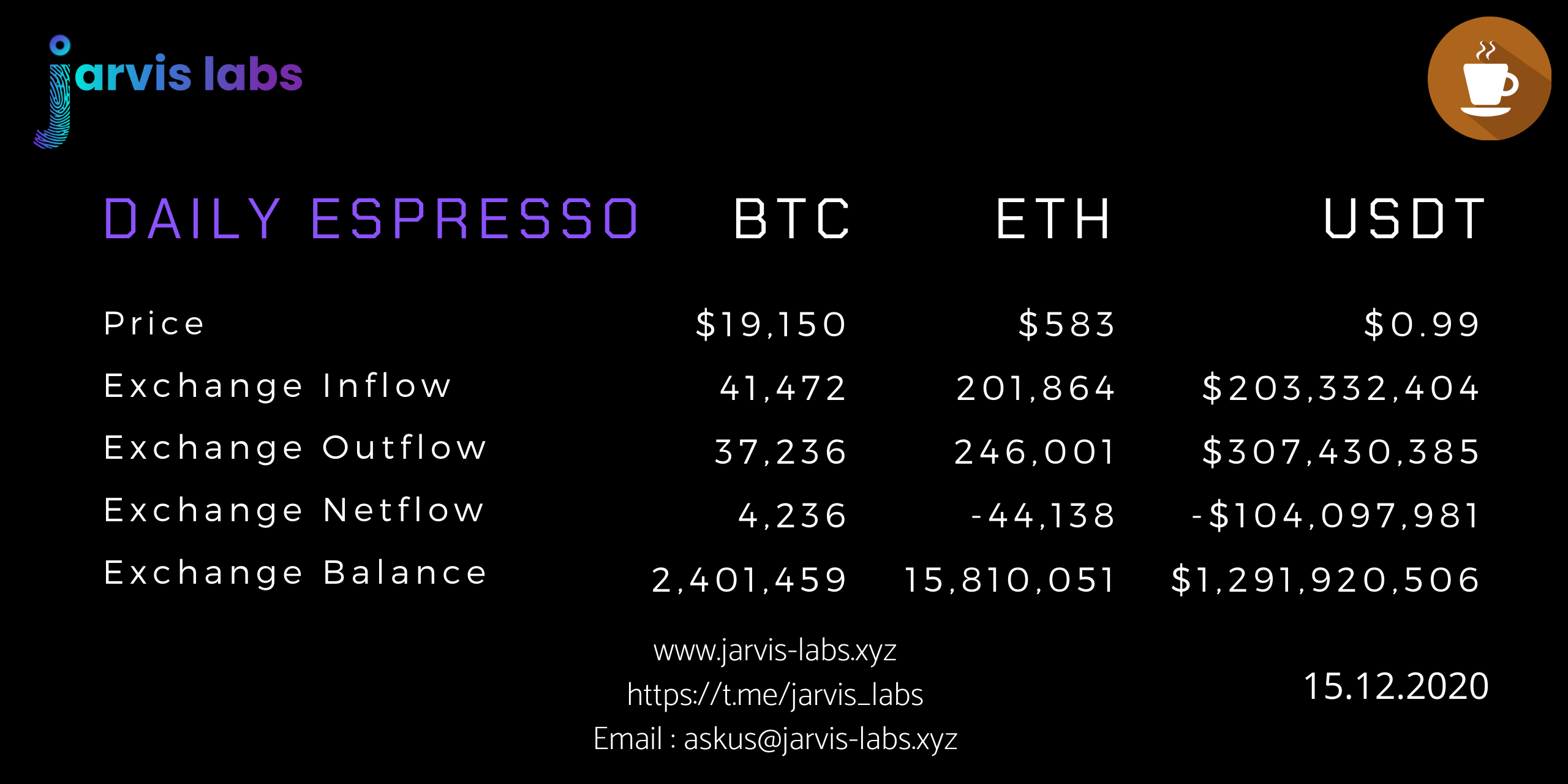Espresso: Is on-chain data lying?
by Ben Lilly
On-chain Dissonance
On-chain metrics don't tell the whole truth. If anything they distort reality.
Popular sites like Glassnodes and CoinMetrics are writing updates on low exchange reserves for BTC amidst this rally. It signals selling pressure for BTC is declining. That's because less BTC on exchanges intuitively means less BTC to sell.
Here is a recent post from Glassnodes on low reserves. The red line is circulating BTC supply on exchanges. As you can see reserves year-to-date are low.
However, like most things it's never so straightforward.
In order to filter out the noise you need artificial intelligence. It's where Jarvis has a leg up. Jarvis not only tracks the wallets of more than 800+ market movers, but understand the habits of each wallet. That's the ai/ml portion of it all.
I can almost hear you roll your eyes on my mentioning of Jarvis and its ability to track wallets. But it's vital to understand what ai/ml does before looping you in on some recent details. Otherwise you'll probably wonder how the heck can we know that?
Well, over the last week wallets associated with bearish activities began depositing BTC on exchanges.
What's more, this activity when paired up with bearish USDT on-chain flow activity from a similar subset of wallets becomes noteworthy. And it's the reason we are willing to go slightly contrarian as mega-bullish news hits daily.
To us the USDT flows are far more interesting. Here's why...
USDT over the last 9 months has been pumping harder than almost any other crypto. Here's the chart...
The trend is clear... Whenever USDT gets minted BTC follows. It's a signal that keeps on giving. No matter how bearish a chart pattern can be, if Tether is minting, BTC is rising.
We're not here to speculate on the backing of Tether or question its legitimacy. Nor even discuss how much of a systemic issue Tether can be if some unthinkable event happened to it.
Instead we're just letting you know some wallets are shuffling USDT in such a manner that leads to bearish moves MOST of the time. This is not signal with a 100% strike rate...
What's the strike rate? Well, out of respect for our subscribers we won't go into too much detail. We are trying to tell you enough information so it's valuable, but not too much to where it's disrespectful to paying subscribers.
Hopefully we toed that line well.
One last thing before I give a trade suggestion...
Risk levels are still insane.
And because risk levels are still insane, consider trading options...
If any of you are options traders this is a good time for a straddle position. We typically only recommend it when volatility gets historically low. So this might seem a bit out of character. But it still makes sense given the fact price is in its current range for almost a month now and risk levels are historic.
Time for your 24-hour exchange flows.
Your Pulse on Crypto,
B. Lilly
*****
P.S. Are you wondering what a straddle is?
Straddles are when you buy a call and a put at the same strike price on the same expiration date. And as volatility expands your trade turns into a winner. It has to do with the manner in which options are priced.
If you are interested in options we started to write some explainers on them several months ago. Here's lesson one and lesson two. And here's an example of a straddle trade that made 600% here.
If you're interested in options, drop us a line... We really do enjoy trading options. We have several options bots users can subscribe to if interested.
There's one for short-term options trading and another one that runs hedge fun strategies such as a delta neutral strategy with gamma scalping. It's a fancy way of profiting off upcoming volatility. Frankly, nobody finds this interesting in crypto so we stopped talking about them. After all, we write for you.

There's zero chance you aren't curious about Jarvis...
There's a message icon in the bottom right hand corner of our website: www.jarivs-labs.xyz. Let's chat.





